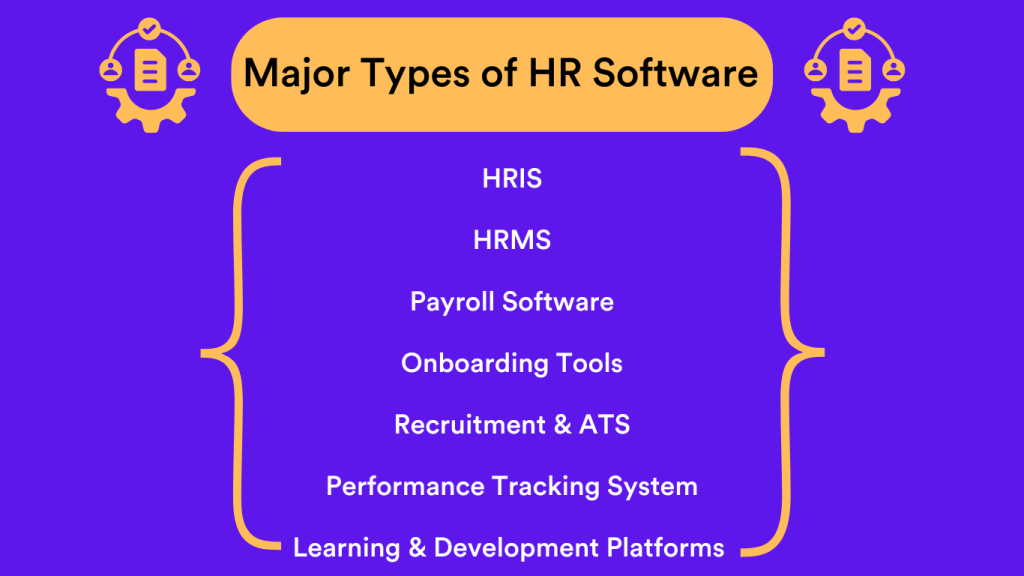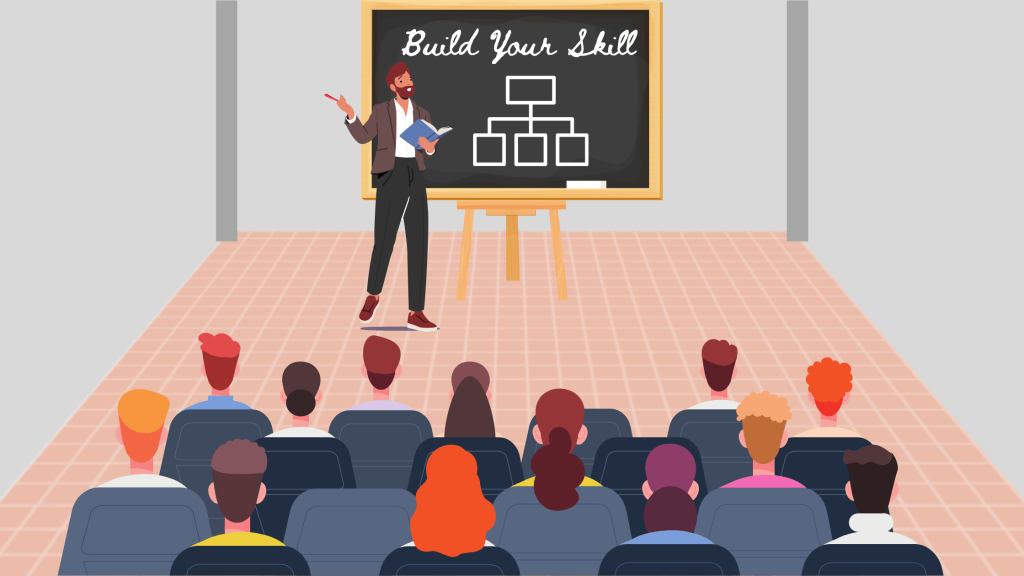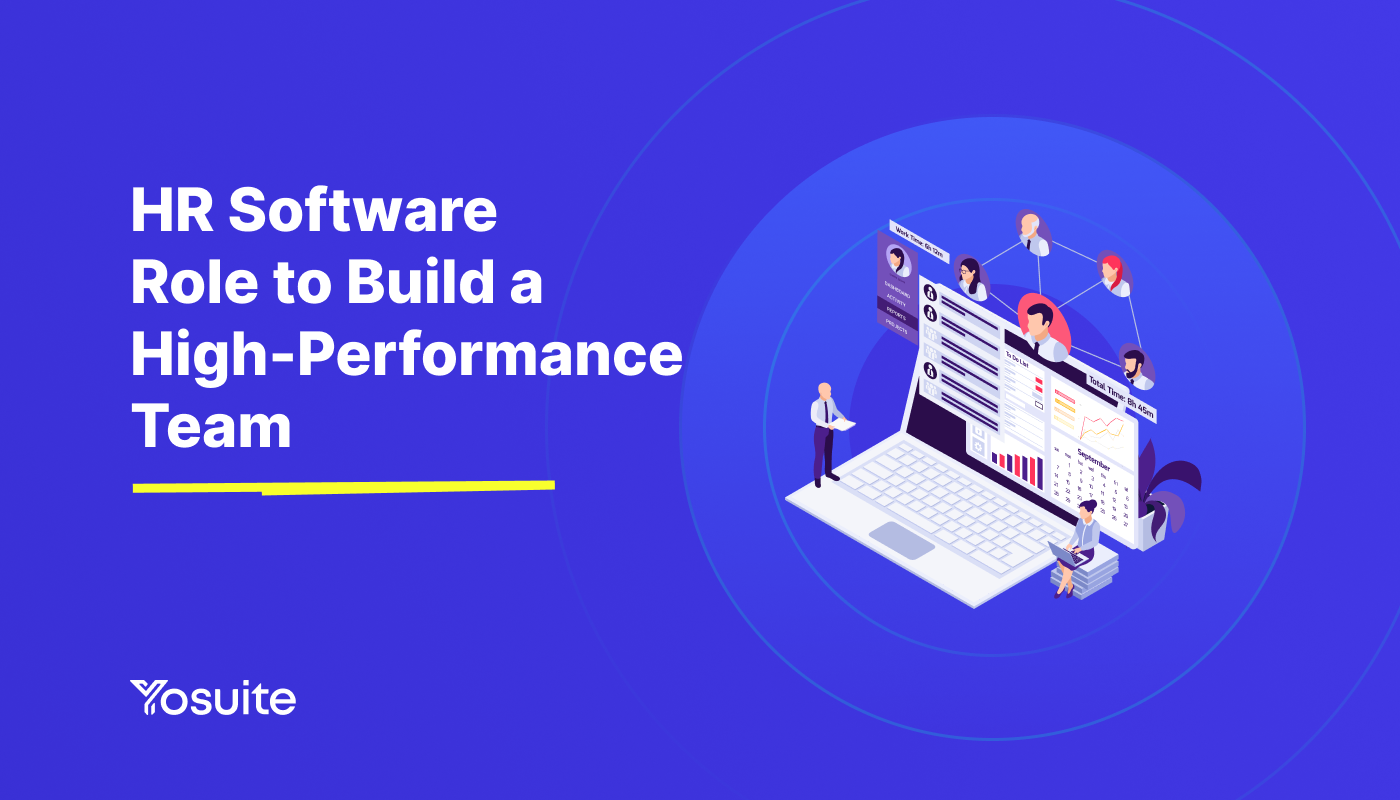Have you ever wondered about HR software’s role in building high-performance teams? Today’s HR software helps organizations to nurture high-performing teams. HR executives and professionals are leveraging these digital tools to improve people processes. They can make data-driven decisions and ultimately boost team performance.
Here, I’ll help you explore the characteristics of a high-performing team, the types of HR software available, how these tools contribute to team performance, and the possible challenges in implementing the solution. Let’s begin
What are the Characteristics of a High-Performing Team?
High-performing teams display key characteristics that set them apart. These traits enable them to collaborate effectively, adapt to challenges, and consistently achieve superior results.
According to the Society for Human Resource Management (SHRM), a high-performance team is “goal-focused with complementary skills, open communication, clear roles, and a strong sense of accountability and trust among members”.
Collaboration:
Team members work together synchronously, extracting the best out of each other’s strengths. They communicate openly and solve problems in real time. The synergy drives the group to outperform individual performers or other loosely-knit teams.
For example, well-integrated teams execute strategy faster and solve complex problems more effectively, using each other’s unique skill sets.
Adaptability:
High-performing teams are flexible and can pivot when circumstances change. They support real-time problem-solving and stay responsive to changing demands. When new challenges or market shifts arise, these teams adjust their approach without losing momentum, ensuring they remain competitive and resilient.
Goal Alignment:
One key aspect that sets high performers apart is a clear shared purpose. They understand how work ties into broader objectives. Every individual is committed to the team’s mission and “performance goals,” and they hold themselves mutually accountable for outcomes.
Individual team members, as well as the team as a unit, have clear goals that create a sense of purpose and ownership, driving members to exceed expectations. For instance, they know that achieving a particular number of sales per month will help the team contribute significantly to the overall company sales.
Trust:
High-performance team members trust one another to do their part and to be candid. This psychological safety encourages risk-taking and honest feedback. This trust helps them feel safe admitting mistakes and be comfortable offering new ideas.
Having trust also strengthens bonds, enabling more openness, creativity, and productive conflict resolution.
Accountability:
Finally, an all-important element of the team is that they are accountable for their tasks and to the group. There’s a strong sense of accountability among members. They reliably follow through on commitments and own their results. They don’t allow underperformance to slip through; instead, everyone holds themselves (and each other) responsible for delivering quality work.
When these traits come together, the result is a synergistic social entity focused on continuous excellence. For example, during a previous job, my department adopted a “team-first” mentality with clear goals, regular feedback, and mutual trust. The outcome was record-breaking project delivery times and a 20% higher product success rate.

What are the Types of HR Software?
Depending on your needs, you can try HR software for your specific needs (like payroll, leave management, performance appraisal, onboarding, etc) or a 360-degree platform that offers an all-in-one experience. Understanding the categories is important to choose the right tools for your needs.
HRMS (Human Resource Management System):
This type of solution encompasses a comprehensive, all-in-one platform with various HR functions. An HRMS combines core HR data management with talent management features. For example, a full-suite HRMS can support talent management activities, including recruiting, benefits, performance management, and training. It usually includes modules for payroll, time tracking, performance reviews, benefits administration, learning, and more. Providing an integrated solution for managing the entire employee journey.
Example: BambooHR
HRIS (Human Resource Information System):
An HRIS is usually focused on core HR data and processes. It serves as the central database for employee information and helps automate essential HR tasks. An HRIS handles things like personnel records, attendance, basic onboarding, and compliance.
In some HRIS, you may get self-service portals for employees to update personal info or request leave. Small to mid-sized businesses often start with an HRIS to streamline paperwork and record-keeping.
Example: GustoHR
Performance Tracking System:
A dedicated Performance Evaluation & Review Software works to monitor and improve employee performance. It focuses on goal-setting, continuous feedback, and performance appraisals. It helps managers and HR personnel measure and track performance and reward employees for high performance.
Key features typically include setting individual KPIs or OKRs, adding productivity metrics, conducting 360° reviews, tracking progress on goals, and identifying top or low performers. These tools ensure that performance evaluations are standardized and ongoing, rather than a once-a-year exercise
For example, using a performance tracking system, a manager can quickly see real-time dashboards of their team’s goals and give timely coaching or recognition.
Example: Lattice
Payroll Management Software:
With this solution, you can automate payroll processing and compensation management. This includes calculating wages, salaries, taxes, and bonuses and ensuring employees are paid accurately and on time.
Payroll software works with data from time attendance devices or HRIS databases to process salaries with minimal manual effort. The benefits are significant time savings and reduced errors. Companies that implemented payroll solutions report 37% less time spent on payroll administration on average.
Modern compensation tools also handle bonus and incentive tracking, pay grade management, and even pay equity analysis.

Example: Paycor
Recruitment & ATS (Applicant Tracking System)
Recruitment software, including Applicant Tracking Systems, helps HR teams manage the hiring process from job posting to offer. An ATS automates the tracking of candidates. It can post jobs to multiple boards, scan resumes for keywords, and organize applications.
These systems guide candidates through the application, interview, and hiring stages.Y ou will explore features like resume parsing, interview scheduling, candidate communication templates, and recruitment analytics. For instance, an ATS can automatically rank candidates based on defined criteria, helping recruiters focus on top talent.
As per reports, over 98% of Fortune 500 companies utilized applicant tracking systems.in 2024.
Example: Workday
Onboarding Tools:
Another software, the onboarding tool, assists HR teams and managers in expediting the initial stages of a new hire’s joining. It digitizes and organizes the numerous tasks that need to happen when someone joins the company.
For instance, an onboarding platform can provide new hires with a portal to complete paperwork, view the company policies, and follow a step-by-step introduction plan. These tools help ensure that new hires experience the best possible start.
You can also use this software to send reminders for training modules, prompt IT to set up accounts, and pair the new hire with mentors.
Example: Deel
Learning & Development (L&D) Platforms:
Utilizing a Learning Management System (LMS) will let you manage employee training and professional development very smoothly. An LMS provides a centralized hub for planning, creating, delivering, and tracking educational content and courses.
You can use L&D software to do training needs analysis, assign training, monitor completion, and even recommend learning paths for career growth. A significant number of organizations have embraced e-learning, training, and upskilling.
96% of large and mid-size companies use an LMS to run their training programs, as per the 2023 Training Industry Report by Training Magazine. From onboarding training to ongoing skill development, L&D platforms help build a more skilled and adaptable team.
Example: Articulate Rise 360
How Can HR Software Help Build High-Performance Teams?
The HR software solutions automate routine tasks and provide rich data insights to HR managers. This helps them focus on managing the people and optimizing teamwork. Below are key ways HR software helps create and sustain high-performing teams.
Efficient Onboarding & Integration:
First impressions matter. A smooth onboarding process helps new team members integrate faster and start contributing sooner. HR software ensures a consistent, engaging onboarding experience.
It automatically provides newcomers with training modules, policies, schedules, and resources. Employees who go through a structured onboarding are 58% more likely to stay with the company for at least three years and are 50% more productive in their first few months. This means lower turnover and well-synced teams.
Improved Communication
HR platforms facilitate better communication through tools like employee self-service portals, company news feeds, chat integrations, and feedback systems. When everyone has access to the information they need (be it policy updates or team goals) and channels to voice concerns, it removes misunderstandings that can hinder performance.
Open communication fosters trust and alignment. Workplaces that promote open, transparent communication see better decision-making and problem-solving. For example, some companies use an HRIS with built-in messaging or integrate their HR system with collaboration apps like Slack, Microsoft Teams, Trello, etc., so that HR announcements or recognition posts are visible to all. This keeps remote or distributed teams connected.
Expediting Collaboration:
HR software can break down silos and expedite collaboration across the organization. Many HR suites now include social intranet features. Some even integrate with project management tools, allowing cross-functional teams to form and coordinate quickly.
HR can use these tools to set up cross-departmental groups (for mentorship programs, innovation challenges, etc.) and track their progress.
The collaborative environment fostered by these technologies unifies employees around shared goals. Research shows that encouraging people to work together results in better productivity and efficiency.
Talent Development & Upskilling:

High-performing teams thrive on continuous learning. HR software supports Learning & Development by identifying skill gaps and delivering targeted training. With an LMS or L&D platform, managers can ensure each team member is constantly improving relevant skills.
Companies that invest in employee development create considerably more high-performing teams. Gallup research finds that organizations are 17% more productive when employees receive the training they need.
Moreover, a striking statistic from a Forbes study shows that companies with comprehensive training programs have 218% higher income per employee than those without formal training.
Consider the real-life case of AT&T, which rolled out a massive upskilling program via an internal HR platform. They credited this initiative with transforming their workforce to meet new tech demands and stay competitive.
Strategic Workforce and Succession Planning:
One of the most effective ways to create high performance is placing the right people in the right roles at the right time. HR software having modules for HR analytics and planning helps leaders forecast personnel needs and develop talent pipelines.
Through data on performance, retirement projections, and skill sets, HR managers can anticipate where future leaders might be needed and prepare succession plans accordingly. An HRIS/HRMS can track competencies and performance ratings to highlight employees who are prime candidates for promotion or additional training. This strategic insight prevents talent gaps that could hurt team performance.
An ideal example would be HR managers using people analytics software to discover that several seniors were likely to retire in 2-3 years. Then, they can proactively start a mentorship and succession program via their HR platform. This will help ensure knowledge transfer and readiness of new leaders
Recognizing and Rewarding Performance:
Timely recognition is a powerful motivator for teams. HR tools often include gamification features like badges, points, or public kudos systems. These feed into performance evaluations and promotion reports.
By tracking achievements and providing dashboards for accomplishments, these systems make it easy to acknowledge hard work regularly. Why is this important? Employees who feel valued and recognized are more engaged and likely to go the extra mile.
Zappos, a multinational e-commerce chain, is well known for its independent entity called Zappos’ Insights, which was built to share the company’s core values with a global audience. Their strategic employee recognition approach is based on a peer-to-peer format, with employees sharing low-cost, high-frequency rewards.
Employees can earn “Zappos Dollars” for training participation. These dollars are redeemable in the office via branded vending machines. Employees can also donate the dollars to a Zappos partner charity.
Workplace Culture Enhancement:
Company culture often defines how well a team performs over the long run. Tools like pulse surveys, engagement analytics, and feedback forums allow HR to gauge team sentiment and address issues proactively.
Regular engagement surveys can identify if trust or collaboration is eroding in a team so leaders can intervene. Additionally, HR platforms can drive culture-building activities – from promoting company values in the onboarding process to facilitating internal social networks that celebrate those values.
HR software can pinpoint cultural weaknesses and help turn them into strengths. A positive, feedback-rich culture underpinned by HR technology will keep teams cohesive, resilient, and aligned with organizational values.
Performance Improvement through Real-Time Analytics:
Perhaps one of the most transformative aspects of modern HR software is people analytics. Through this feature, you can get real-time data on performance and productivity and act on it. Instead of relying on hunches, managers can use HR dashboards to see trends in attendance, project completion rates, sales per employee, customer service ratings, and more, sliced by team or department.
These insights enable quick, informed decisions to boost performance. For instance, if analytics show a dip in a team’s output coinciding with low engagement survey results, leadership can respond immediately (maybe by rebalancing workloads or providing support) rather than waiting for quarterly reports.
TechNova (a tech company) found their performance review process was cumbersome and affecting morale. They implemented a new digital performance management system (with real-time goal tracking and feedback capabilities) and were able to cut the time spent on performance reviews by 40%. Within six months, employee satisfaction with the process jumped, and project completion rates increased by 35% in a year.
Challenges in Implementing HR Software for Performance Building
While HR software offers many benefits, HR leaders often face practical and organizational challenges when rolling out new technology designed to enhance team performance.
Budget Constraints
Cost is one of the primary concerns in any HR tech initiative. Acquiring and implementing robust HR software can require a significant investment, and oftentimes, projects run over budget.
To overcome this, HR executives need to build a strong business case (e.g., citing time savings or productivity improvements) to secure funding and also plan for a total cost of ownership. It’s also wise to start with the most impactful modules (say, an ATS to fix hiring bottlenecks) and expand features gradually as ROI is demonstrated.
Integration Issues
Another technical challenge is integrating new HR software with existing tools and workflows. Many organizations have multiple legacy systems (payroll, ERP, project management software), and if the new HR software doesn’t integrate, data can end up siloed or inconsistent.
Overcoming integration issues often requires collaboration with IT experts and possibly the software vendor to ensure compatibility. The extra effort is worth it: when integration is successful, HR teams can, for example, link performance metrics to compensation or tie engagement survey results to turnover data, creating a holistic view that drives smarter decisions.
Lack of Employee Support
One of the biggest reasons HR tech implementations fail is not the technology itself but user adoption. Employees and even managers might resist using a new system, especially if they find it complex or fear it will be used for micromanagement.
In fact, an industry study found that about 42% of organizations rated their HR tech implementations as not fully successful, largely because employees did not use the new tools or see value in them.
Without employee support, even the best HR software will sit unused, so training and managing the people’s side of tech change is crucial.
Need for Extensive Training
HR software can be feature-rich and complex, which means both HR staff and end-users often require training to use it effectively. This is closely tied to the adoption issue above. If a performance management system has advanced analytics dashboards, managers must be trained to interpret and act on the data.
A best practice is to use a train-the-trainer approach: get a core group proficient (with help from the vendor or an HRIT specialist) and have them coach their peers.
Keeping Up with Changing Trends and New HR Technology:
The HR tech landscape evolves rapidly. AI-powered recruitment chatbots, predictive analytics for retention, platforms for remote team engagement, etc. A challenge for HR professionals is future-proofing their tech investments and adapting to change. What you implement today might need upgrades or additions sooner than you expect.
To manage changing trends, some organizations form an “HR technology roadmap,” reviewing it annually to decide if their current tools still align with business needs. This proactive approach helps avoid being caught off guard by technology shifts.
Summing Up
The role of HR software in building high-performance teams is both foundational and transformative. It provides the foundation by ensuring everyone is recruited, onboarded, paid, trained, and managed efficiently.
It also enables transformation by offering insights and capabilities that traditional HR management simply couldn’t achieve, from AI-driven talent analytics to automated recognition triggers. The result is an organization where HR truly partners with the business, using technology to unlock human potential and drive superior outcomes.
As HR executives and professionals, investing in the right HR tools – and implementing them thoughtfully – is an investment in your teams’ success. It’s telling that 74% of businesses plan to increase spending on HR technology, reflecting a broad recognition that these systems are crucial for future-ready, high-performing workplaces.
Here’s to using technology not just to manage workforces but to empower them – creating high-performance teams that drive organizational greatness.



Leave a Reply